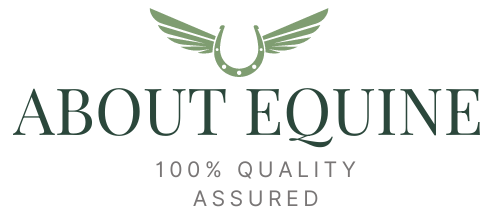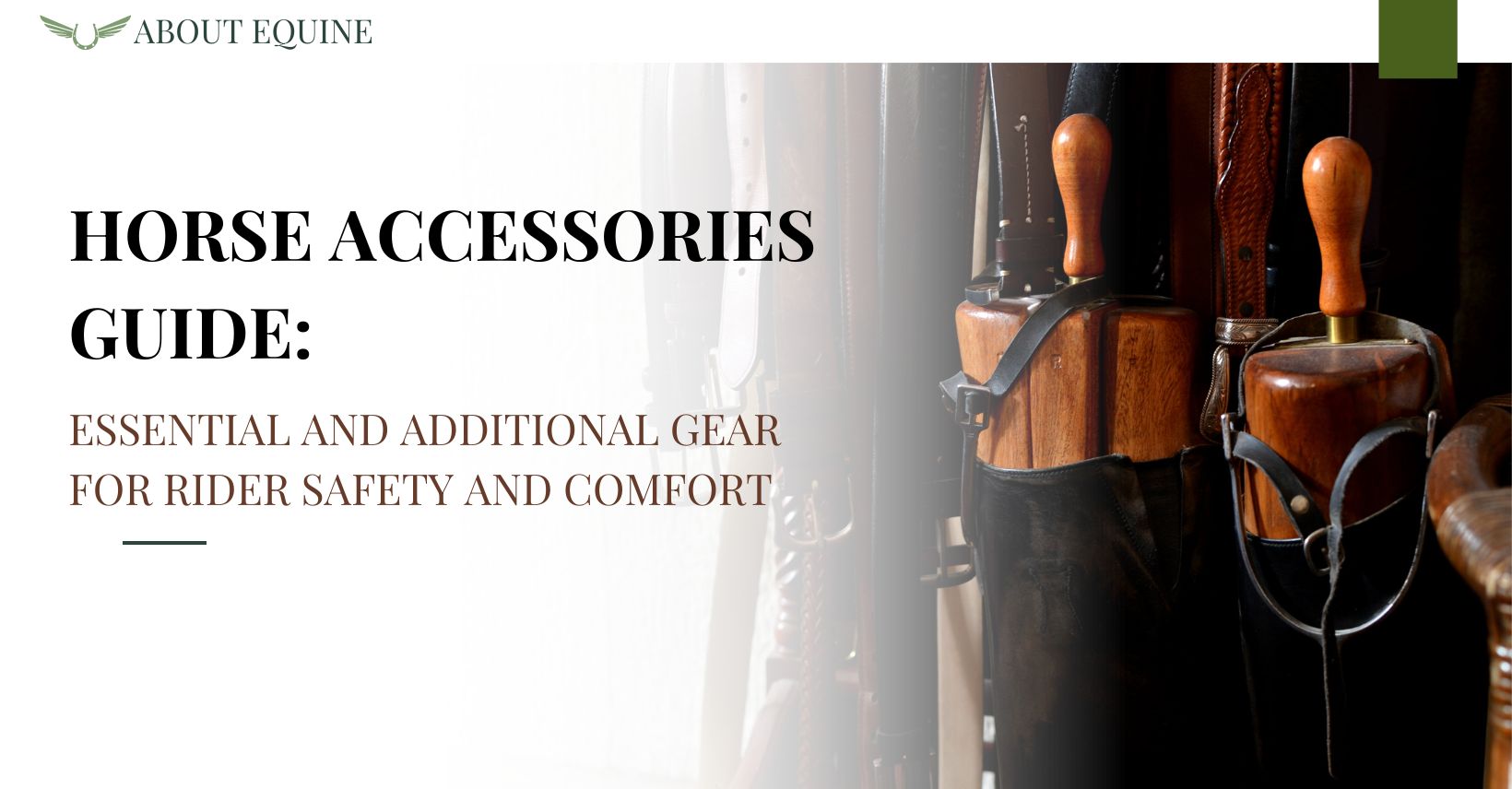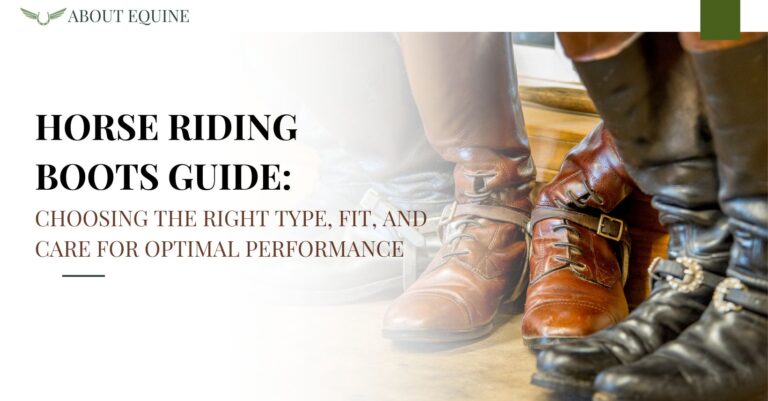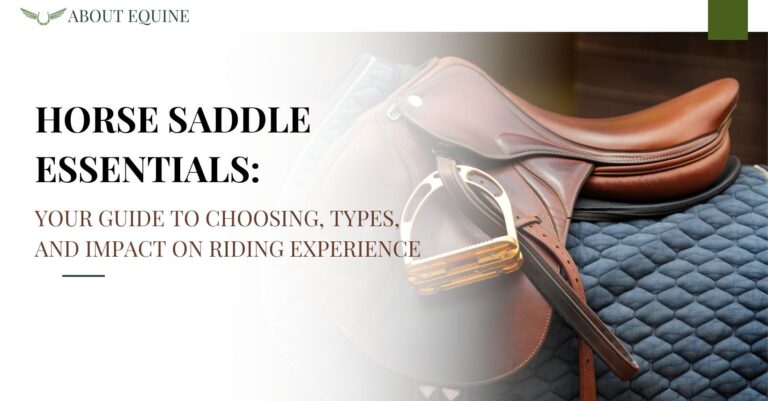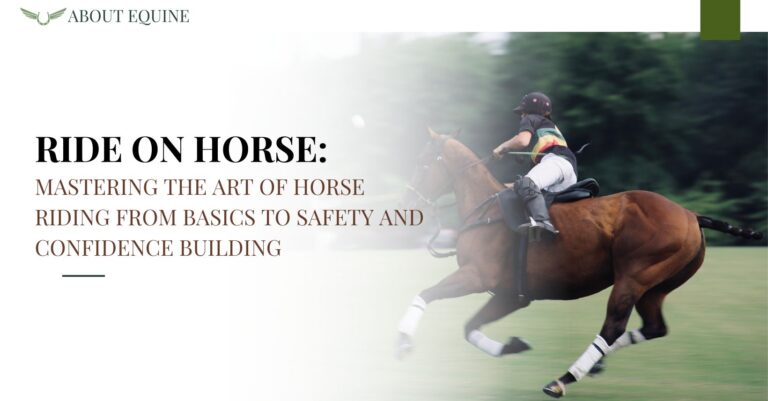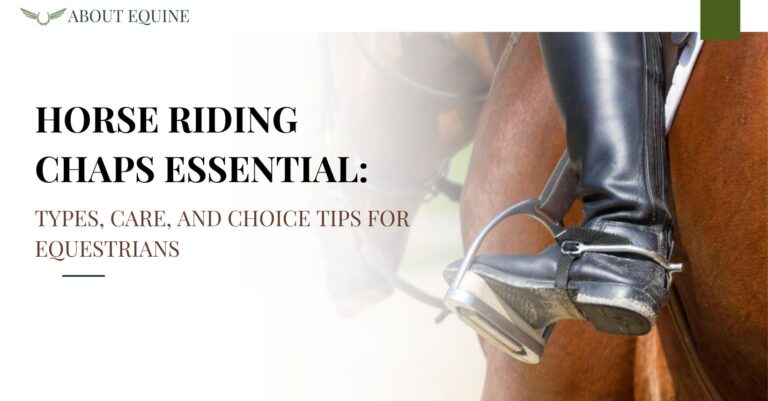Horse Accessories Guide: Essential and Additional Gear for Rider Safety and Comfort
Are you a horse rider looking to ensure your horse’s safety and comfort?
This comprehensive article will discuss the essential horse accessories every rider should have, including riding helmets, boots, and grooming kits.
We will also explore accessories like horse trailers, fly repellents, and tack-cleaning supplies.
Stay tuned to learn how to gear up and provide the best care for you and your equine companion.
What Are the Essential Horse Accessories for Every Rider?
Essential horse accessories for every rider include riding helmets, boots, breeches, gloves, saddle, bridle, grooming kit, hoof pick, horse blanket, first aid kit, and horse treats.
Each of these accessories ensures a safe and comfortable riding experience for the rider and the horse.
Riding Helmet
A riding helmet is an important safety gear for horseback riding. It is designed to protect the rider’s head in case of falls or accidents.
Wearing a helmet is about following safety regulations and prioritising your well-being. The proper fit of a riding helmet is paramount; it should sit snugly on the head without being too tight or loose.
To ensure a correct fit, measure the circumference of your head and refer to the helmet size chart provided by the manufacturer. Various types of riding helmets are available, including traditional velvet-covered helmets for show riding, sleek and ventilated helmets for warm-weather riding, and helmets equipped with visors for sun protection.
Riding Boot
Riding boots are specially designed footwear for horseback riding. They provide grip in the stirrups and ankle support for the rider.
Various types of riding boots are available, each with unique characteristics suited for different riding disciplines. Paddock boots, also known as jodhpur boots, are ankle-length boots that are versatile and great for everyday riding. On the other hand, tall boots, such as field boots and dress boots, provide added protection and elegance and are ideal for dressage and jumping.
Materials like leather, synthetic, and rubber are commonly used to construct riding boots, each offering distinct advantages. Leather boots are durable and offer a classic look, while synthetic boots are lightweight and easy to care for. Rubber boots are waterproof, making them suitable for wet conditions.
Riding Breeches
Riding trousers are customised trousers worn by riders for comfort, flexibility, and grip while riding a horse.
Choosing the right riding trousers can greatly impact a rider’s performance. With their snug fit and knee patches, Jodhpurs provide excellent grip and mobility, which is ideal for disciplines like dressage and show jumping.
On the other hand, full-seat trousers offer extra grip through a suede or leather patch that extends from the seat down to the knees, enhancing stability during intense riding activities.
Both trousers are designed to minimise friction and chafing while in the saddle, ensuring a seamless riding experience. The proper fit of riding trousers allows for comfortable movement in the saddle. It prevents any distractions that ill-fitting clothing may cause. Investing in high-quality riding trousers not only enhances performance but also adds a touch of professionalism to the rider’s equestrian attire.
Riding Gloves
Riding gloves are essential accessories for horseback riders. They provide grip, protection, and comfort while handling reins and performing tasks.
One of the main benefits of wearing riding gloves is their improved grip, which can greatly enhance control and communication with the horse. These gloves help prevent blisters and calluses from frequent reins handling, ensuring a more comfortable riding experience. Different riding gloves are available, ranging from lightweight summer gloves to insulated winter gloves, each designed to suit various weather conditions and riding disciplines.
Saddle and Bridle
The saddle and bridle are essential riding equipment, providing stability, control, and communication between the rider and the horse.
Riders can choose between English and Western saddles based on their riding style and preferences. English saddles are lightweight and suitable for jumping and dressage. Western saddles offer more support and are commonly used for trail riding and ranch work.
Bridles consist of the headpiece, browband, cheekpieces, throatlatch, noseband, and reins, each playing a vital role in directing the horse’s movement and responses.
Grooming Kit
A grooming kit is essential for maintaining the horse’s hygiene, grooming, and overall well-being, including brushes, combs, and hoof picks.
These tools serve specific purposes in the grooming process.
- Brushes help remove dirt, sweat, and loose hair from the horse’s coat, promoting circulation and distributing natural oils for a healthy shine.
- Combs are used to detangle the mane and tail, preventing knots and ensuring the hair remains neat and manageable.
- Hoof picks are important for cleaning the horse’s hooves, removing dirt and debris to prevent infections, and maintaining hoof health.
Hoof Pick
A hoof pick cleans the horse’s hooves, removes debris, and prevents infections or discomfort.
Proper hoof care is paramount in maintaining a horse’s overall well-being. Regular cleaning with a hoof pick removes dirt and rocks. It also allows for early detection of issues such as thrush or abscesses. By keeping the hooves clean, horse owners can ensure proper circulation and hoof health.
Incorporating hoof boots can provide additional protection during rides on rough terrain or when transitioning to barefoot hoof care. These boots act as shields, preventing excess wear and tear and promoting optimal hoof function.
Horse Blanket
A horse rug protects the horse from cold weather, rain, wind, and insects, ensuring its comfort and well-being.
Various types of horse rugs are designed to cater to different purposes and weather conditions. For instance, turnout rugs are ideal for outdoor use as they are waterproof, durable, and provide insulation against harsh weather.
Conversely, stable rugs are perfect for indoor use, offering warmth and comfort in the byre. Fly sheets are specifically designed to protect horses from bothersome insects and UV rays during warmer days.
First Aid Kit
A first aid kit is necessary for riders who need to handle minor injuries or emergencies while riding or handling horses.
Equipping yourself with essential first aid supplies can make a significant difference in providing immediate care to your horse in case of an injury. Key items to include in a horse first aid kit are:
- Gauze pads and bandages for wound dressing
- Antiseptic solution for cleaning wounds
- Thermometer to monitor body temperature
- Scissors and tweezers for cutting bandages and removing debris
Preparing for emergencies is important, as quick and proper first aid can prevent minor injuries from escalating into more serious conditions.
Basic first aid procedures for common horse-related injuries include:
- Cleaning and disinfecting wounds before applying bandages
- Applying pressure to control bleeding
- Monitoring vital signs and seeking veterinary help if necessary
Horse Treats
Horse treats reward and bond with your horse, offering positive reinforcement during training or grooming sessions. Many types cater to preferences and dietary needs, including apple slices, carrots, commercial horse treats, and homemade goodies like oat-based cookies or carrot bites.
These treats provide a delicious reward and essential vitamins and minerals for the horse’s well-being. Judicious use of treats during training is important to avoid overfeeding and maintain a healthy diet.
Treats reinforce positive behaviour, teach new commands, and show appreciation for the horse’s efforts. By incorporating treats into training sessions, you can strengthen your bond with your equine companion while making the learning experience enjoyable.
When considering other ways to enhance your horse’s well-being, additional accessories are worth exploring…
What Are Other Additional Horse Accessories to Consider?
In addition to essential accessories, riders may consider other items such as a horse box, fly repellent, horse feed and supplements, riding crop, and horse tack cleaning supplies to enhance their riding experience.
Fly repellents are vital in protecting horses from bothersome insects and potential diseases. They help keep flies, mosquitoes, and other pests at bay during rides or while the horse is out in the paddock.
Proper nutrition is key for maintaining a horse’s health and performance. Horse feed and supplements provide essential nutrients, vitamins, and minerals that may be lacking in their diet. Quality feed and supplements will ensure your horse stays healthy, energised, and in top condition.
Regular cleaning and maintenance of horse tack are essential to ensure the safety and comfort of the horse and rider. Dirty or damaged tack can cause discomfort and even injury. Proper cleaning supplies and techniques can prolong the life of tack and maintain its quality.
Horse Trailer
A horse trailer is a mobile unit designed to transport horses safely and comfortably to different locations, such as competitions, trails, or veterinary visits.
- Slant load trailers are popular, with horses loaded at an angle, maximising space utilisation.
- Straight-load trailers have horses loaded straight on, suitable for larger breeds.
- Stock trailers provide ample room for horses to move around and are versatile for various livestock.
Consider durable flooring, adequate ventilation, and secure dividers when selecting a horse trailer.
Fly Repellent
Fly-repellent products protect horses from flies, mosquitoes, and other insects that may cause irritation or discomfort.
There are two main types of fly repellents for horses: chemical and natural. Chemical repellents usually contain active ingredients like permethrin or pyrethroids, which are effective but may have drawbacks, like skin sensitivity in horses. On the other hand, natural repellents use ingredients like citronella, eucalyptus, or neem oil to repel insects safely.
Application methods for fly repellents vary, with sprays being a popular choice for easy and quick coverage. For a longer-lasting effect, fly masks and sheets can provide physical barriers against insects, especially around sensitive areas like the face and body.
Protecting horses from insect bites is important to their well-being. Bites can cause discomfort and transmit diseases like West Nile virus or equine infectious anaemia. Investing in proper horse accessories such as fly masks, fly sheets, and fly repellents can make a significant difference in keeping horses healthy and happy.
Horse Feed and Supplements
Horse feed and supplements are essential for maintaining the horse’s health, energy, and performance, especially during training, competitions, or recovery.
Proper nutrition ensures horses receive the necessary nutrients to meet their energy and exercise needs. The feed includes hay, grains, concentrates, and specialised feeds customised to address specific health or performance goals.
Supplements can also be beneficial in supporting the horse’s diet, filling any gaps in essential vitamins, minerals, or micronutrients. It is important to consult a veterinarian or equine nutritionist to determine the appropriate feeding schedule and dietary requirements based on the horse’s age, breed, activity level, and overall health status.
By providing a well-balanced diet and incorporating the right supplements, horse owners can positively impact their animal’s performance, stamina, and overall well-being.
Riding Crop
A riding crop is a training aid riders use to communicate cues, guide the horse, or reinforce commands during riding or training sessions.
It is typically made of leather or synthetic materials and has various lengths to suit different riding disciplines. The correct way to use a riding crop is to light tap or touch the horse’s shoulder or flank to direct their attention or encourage certain movements. When used correctly, the crop can provide subtle signals and aid in refining communication between the rider and the horse, fostering a stronger connection and understanding.
Horse Tack Cleaning Supplies
Maintaining horse tack is essential for keeping saddles, bridles, and other equipment clean, durable, and functional. Regular cleaning and conditioning prolong the lifespan of your gear while ensuring comfort and safety during rides.
Essential tools include a sponge, soft brush, leather cleaner, conditioner, and a clean towel. These items help remove dirt, sweat, and grime that accumulate over time. Gentle scrubbing and thorough rinsing are vital to avoid damaging the leather and eliminate all residues.
Leather care prevents cracking, drying, and mould growth. Conditioning the leather with a quality product keeps it supple and wear-resistant. Store your tack in a cool, dry place away from direct sunlight and moisture to prevent damage.
Regular inspection for loose stitching or cracked leather is key to addressing issues promptly and ensuring safety. With your well-maintained tack, it’s time to consider the broader aspects of keeping you and your horse comfortable and safe.
Gearing Up: Ensuring Safety and Comfort for You and Your Horse
Gearing up with the right horse accessories is essential for ensuring the safety and comfort of the rider and the horse during any riding activity.
When selecting horse accessories, factors such as proper fit, quality materials, and functionality, which are key to their practicality and usefulness, play a crucial role in enhancing the riding experience.
A well-fitted saddle not only ensures the rider’s stability but also prevents discomfort for the horse, allowing for smoother movements and improved performance.
Investing in high-quality bridles, reins, and bit can establish clear communication between the rider and the horse, fostering trust and cooperation in every ride.
